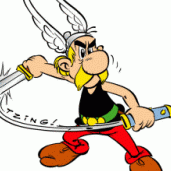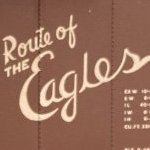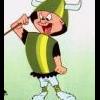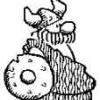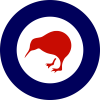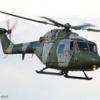Search the Community
Showing results for tags 'WW1'.
-
HMAS AE2 - World War One Submarine. About a decade ago I started idly dreaming about scratchbuilding a model of the famous Australian World War One submarine AE2. One year ago, almost to the day, a generous fellow modeller lent me a set of his plans for an E-class submarine. 11 months ago work started. Three days ago I finished the model. After what seems like a very long time and a great deal of fun, here's the result. Please enjoy! Those of you that have been following the WIP thread will know that the last week of this project was essentially a blinding sprint to get this thing completed in time for the Western Australian Scale Model Exposition (WASMEx). So how did I go in the competition? Well have a look at the photo below and have a guess which one won! Hmmmmm.... No real surprise! Yep - My little submarine came second in the maritime scratchbuilt class. This was what I expected all along because there's one guy here in Perth who is an absolute master of maritime scratchbuilding (lets call him GW shall we). I figured all along that he would win - that's his HMS Vanguard in the Perspex case! Scratchbuilt - from balsa of all things! Well - there's nothing wrong with being beaten by a true champion! Congratulations GW, a deserved win! In any case, I can't complain because it was GW that lent me the plans in the first place! So my submarine came second, which is fine by me, especially since there was a field of nine entries in the maritime scratchbuilt category. So it looks like maritime modelling in Western Australia is in good health. If you are interested in how this model was made please have a look at WIP log which can be found here... And if you will allow me to indulge in a small 'plug' - why not check out my next project - a scratchbuilt, 1/32 Avro 504. That WIP can be found here... All comments and critiques most welcome. Warmest Regards - Bandsaw Steve
- 36 replies
-
- 47
-

-

-
- Scratchbuilt
- Wood
-
(and 1 more)
Tagged with:
-
Trying to finish some half-started projects. This vignette was supposed to be for the Great War GB last year but I got distracted. The gunner is one of the figures in the old Tamiya LRDG truck kit with a head from the Dragon Monte Casino figure set. Arms re-positioned so he's firing up. The Dragon heads are very lifelike. The Lewis gun and ammo box are Resicast. The spotter is an ICM figure from their WW1 ANZAC set, also with a Dragon head and re-positioned arms. I have a few sets of the ICM WW1 figure sets and they are all really good. The pit/base is a hogged out piece of pine with acrylic medium and grit gooped on.
-
Here's my recently completed Roden Holt tractor with the 8" howitzer. Model Cellar will have the driver available in September with three choices of headgear. The figure was sculpted by Mike Good. Weathering on the tractor with Ammo and MIG products. Ammo Moss Green and Vallejo Bronze Green were my base colors.
-
“The sound of bullets tearing through canvas, wood, and metal; the young pilot’s heart thumps in his chest. That last burst missed his goggled helmet by mere inches. He desperately throws the control column left and right, presses the rudder bar with all his waning strength, but his attacker is in a far better machine and is far more experienced. The enemy stays doggedly on his tail, hurling more lead at his machine. As the fight gets lower and lower, he prays that his luck holds out. Tearing canvas, water pouring from the holed radiator, a stuttering engine and the smell of fuel indicate that his trusty steed is mortally wounded. The fight is over. Finding the nearest clearing, the young pilot throws the groaning machine to the earth. It rumbles along the rough ground, now under its own control. Knowing he is now a passenger along for the ride, the young pilot tightens his shoulder harness in preparation for the inevitable sudden stop. His craft lurches of the bank of a small river, it’s shark-like nose ending its days unceremoniously dumped into the muddy water. The young pilot is dazed, but alive. What was terror now turns to anger with the release of the tension. He tears of his goggles, throws his harness off, and climbs onto the spine of his machine to take stock of his luck. As his victor flies over the scene, waggling his wings, the young pilot hurls his fist at the enemy; “You win this time”, he screams. He may have been vanquished, but he has lived to fight another day”. Hi all – I hope you don’t mind the melodramatic start to the post! This rough idea is the back story behind my latest completion, a small crash diorama based on the 1/48 scale Eduard Albatros DVa. This is a project that I’ve had in mind since way back in 2006 when I first saw Stan Stokes’ painting called “Gotcha”: This was my first time at modelling terrain, and modelling water. I made plenty of mistakes (many of them are obvious) but it was a good learning experience. The aircraft itself was modified to incorporate battle damage, in order to help tell some of the story.! The aircraft personal and unit markings are fictional, but broadly represent markings of the mid 1918 period. I included a four-leaf clover motif on the fuselage to help with the idea that the pilot’s luck has held out. The pilot is a modified figure using various bits and pieces I had in the spares box. I gave him a set of goggles that he’s holding in his left hand. I am definitely NOT a figure painter, as you can see Progress pictures of all aspects of the build are in the following threads: https://forum.ww1aircraftmodels.com/index.php?topic=10149.0 https://www.britmodeller.com/forums/index.php?/topic/235052386-vanquished/ Anyway, here are some more pictures: I welcome all feedback – as I said, this was my first time tackling terrain and water effects, so I’m sure there are plenty of tips out there that you all can give me. Cheers! BC
- 24 replies
-
- 59
-

-

-
Here is my attempt at a build log of the Hobby Boss Voltaire. Have had lots of probs trying to upload photos but have just finished my new Flickr account so let's have a go (please excuse my lack of photographic ability!)😨 Hooray!😀 Just a test piece of hull assembled, now more pics to hopefully bring me up to date with my build... Hull reinforcements. ... Hull strakes, sed painters masking tape and 4 coats of plastic primer... In the mean time blast bags using pva. . Worked to a degree but lacked the detail I wanted, good for smaller scales but think I'll go back to sculpting them in future. Bits in preparation for painting Oooooh, colour... Hull painted with Tamiya acrylics Oops! Deck painted and dry fitted Ready for post shading, oil washes and highlighting And finally some various oil washes using mixtures of burnt umber, raw Sienna, yellow ochre and white. This is just the first stage of weathering so will keep you posted as I go along. Many thanks for looking!😊
- 16 replies
-
- 5
-

-
- Pre-dreadnought
- WW1
-
(and 1 more)
Tagged with:
-
Hallo again Here is my Gotha Vb in 1/72 from Roden. It was a challenge for me this huge bomber and the first time the decaling the wings and fuselage. Some years ago for our special exhibition at the Austrian Army museum. Today my AEG from WNW is in the pipeline. Fun to build. Nice the task of the rigging. Happy modelling
- 23 replies
-
- 48
-

-

-
I had hoped to get this one in 'under the wire' for Armistice Day...but figured a little extra care was better than speed, since it was a project years in the making, anyway. This is Hobbycraft's all-too-hard-to-find 1/32 SPAD XIII fighter, done up as 'Smith IV,' the mount of US ace Capt. Arthur Raymond Brooks---the real original Kellner-built a/c now residing in near-pristine restored condition at the Smithsonian's National Air and Space Museum in Washington D.C. I first saw her as a torn and tattered pre-restoration hulk at the Silver Hill storage facility back in the early '80s...very shortly before the museum's crack staff worked their magic, and restored her to her present glory. Kit detail is a combination of lots of scratchbuilding and some modified p-e bits from the Eduard set designed for Roden's earlier-model SPAD VII. Specific changes to turn it into Brooks' mount included modifying the lower wings to the earlier 'rounded' configuration, then adding Tom's Modelworks 'plywood' wing extensions in p-e. The kit's Vickers machine guns were scrapped in favor of scratch-built versions of the Marlin models used by something like two-thirds of US-operated SPADs. Finally, the kit's solid 'wing' axle and spreader-bar assembly for the landing gear was switched for the open 'skeleton frame' style seen on the NASM bird. Colors are 'home brew' mixes of Tamiya acrylics. Markings were drawn up in MS-Paint on the PC and the decals printed on my trusty HP inkjet. Notable are the 60-or-so small black patches scattered over the airframe---repaired battle-damage on the original a/c, most decorated by proud groundcrewmen with a tiny German cross. (A number of these are disconcertingly close to the cockpit---including one only inches behind the pilot's headrest...and three at the base of the tiny windscreen, forward.) The kit's prop was the wrong style (of the close to a dozen different models used, from various manufacturers); one from my 'spares' collection was close to the right shape, so I grafted on slightly longer tips and 'squared' them to match the original's Gremont-supplied unit. Rigging is various thicknesses of EZ-line, with hardware cobbled together from an assortment of different p-e sets, and lengths of polyimide tubing. For those interested, the WIP can be found here. A real labor of love, and great fun. Hope you enjoy the photos.
- 20 replies
-
- 29
-

-
Albatros's or Albatri? As ever, all comments welcome. Sweaty
- 12 replies
-
- 33
-

-
Hello, I have the models stored for a long time. The kit made by Special Hobby is a copy of the one made by Eduard but more beautiful... But it will be necessary to prepare the pieces with care. Some eduard photoetched parts are directly molded onto the parts of the Hobby Kit. Obviously it will be this one. With a dragon and a green crocodile (neither white nor gray). Only 2 images (windsock datafiles) showing the cockpit ... This one, CIII or B II ? https://argonnaute.parisnanterre.fr/ark:/14707/a011490872320IXYATY/829de1c3f0 https://argonnaute.parisnanterre.fr/ark:/14707/a0114908723207BqTFP/747d88c39a On the floor (SH) I added the four boards (0.5x0.4mm).All the wood is painted with Mr Hobby's color (sail) and oil. The reservoir is Eduard's. The case, the throttle are in photoetched folded except the interupteur added. The chair is modified by gluing strips of plastic in and sanding. The steering wheel is made of metal wire, the pulley and the inside of the steering wheel come from the eduard photoetch. https://farm5.staticflickr.com/4779/39810278445_11d52cbeac_b.jpg[/img] The opening of the cockpit is refined. Both slots are missing. I will try to refine the wall and cut them out but I think it will not work ... Maybe by sticking a plate with the gills cut out ? I used the plan of the Albatros BII (wingnutwings) to make my cockpit. I'm sure of nothing. I replaced the black dials with white dials. I added an oil pump in brass tube and below a tube with a faucet. I should have glued the dashboard to the other half of the fuselage because the throttle cables must enter two holes on this dashboard... The box that carries the throttle is a little too low. The leather armchair. Of course it was too easy to put the gunner's seat under the hole ... I do not see what it's used for where Sp. Hobby put it. I moved everything so that it was not below the chair armrest and the tingles in front of the dashboard holes. The painting was damaged, obviously... The gunner's seat was moved forward by 5 mm: Now he can use it! I tried to paint the dragon to see if it was easy. I painted it on the eduard fuselage. Oil paint on a matte varnish and a brown background. The engine is almost finished. It is cut in the front and below to get into the plane at the right place. with engine spark wires: The wires are made of metal wire to make baits for "fly fishing". It's very fine. The fuselage must be sanded to remove too thick details. Some are almost 1mm thick and are not beautiful.Il will redo them. I sanded the traps that are on the nose of the plane. Eduard gives it in photoetching. It is necessary to resize the opening of the bonnet (in black) so that the hoses of the engine leave in the good place. Note that the closures of the hoods are very ugly ... I made plastic wire around the opening of the hood. I also sanded the bindings of the hoods to try to remake them. The pellets are a bit big (0.5mm) but I have nothing smaller. It will be necessary to add the spring on some. I cut with the saw in the hood a slot for the synchronization system of the machine gun. The rod and the hooks to carry the bombs are installed. We do not see them anymore or almost with the turret. A rod is put in place, it leaves the controller on the right side. The fuselage is glued. A whole evening of work to get the engine in the right place. No studs to place the half fuselages. The hole to get the bomb sight out is drilled in the floor and the fuselage. The photo shows the location as well as the plan in the Aerophile.. No image of the bomb sight. Can be one like this, a "Goerz". https://www.flightglobal.com/pdfarchive/view/1917/1917%20-%200939.html The turret is too simplified and exceeds too much of the fuselage. So I filed down to try to have flanks more "bent". I wanted a base like the picture, unfortunately the base of the turret is not circular so impossible to resize on a turn. I pasted a profile 0.5x0.5 underneath. The height of the turret is reduced to the scalpel.Not enough yet, the leather protection is in greenstuff. The turret does not exceed the top of the fuselage. I cut a very thin band to pack the wall of the turret. Then I cut it all around with a razor blade. The interior must still be a little arranged..It remains to stick on the handles, the stuff that exceeds and to the slot in the front for the machine gun. The bumps on the hood are added, pity they are not molded original. Their shapes are difficult to apprehend on the photos of time. At the bottom of the hood (on both sides) I engraved and dug the notch in which a tensioner (cable) will be fixed. A dymo band pierced with a hole and cut out serves as a model to engrave the outline, then one digs with the scalpel. The foot market is dug, a photo-cut will surround it. A tip, do it before closing the fuselage ... The red engraving is deleted. The one in green added. I found only a photo of the back of the fuselage where we could distinguish panels of different colors or possible brands of "rivets". Same for the flanks. There are really not many exploitable images. A lot of putty and sanding but nothing insurmountable. The shape of the fuselage nose is too sharp in my opinion. I sanded a little to make it more "square". I redid fasteners for stretchers. Two on each side. A shot of surfacing with the airbrush and a layer of paint that will serve as a background for the oil painting. The panels are painted separately but without drying between each panel (too long). I use a piece of tape to limit the start of the panel. The paint is burnt sienna. The lower wing. It's not too transparent I think. I have too much beige paint and the cross has almost disappeared. On the pictures of the plane the central plate seems absent as well as the tank on the wing. We see the sky through the wing ... In addition there is a tank under the wing that I had not seen: As on this BII ? If anyone has any details about his form, I will be very happy ... That's it, it's dry and varnished. The covers are painted in light green XF76 (if not gray). I tried to paint white oil paint to make the dragon and the crocodile ... it does not work, the white is not opaque. It will be decals... I have no picture of gunner's cockpit, only this plan: https://gallica.bnf.fr/ark:/12148/bpt6k65518819/f14.double.mini.auto=2 On the plan (p14) there is a small dotted rectangle noted "CASIER". It is at the level of the bombshell on the right of the fuselage. This could indicate the position of the ammunition locker. I think the gunner was standing too. P21 Windsockdatafile, the gunner is standing (He breaks for the photographer. The plane is on the ground). The crocodile in white is made with a stencil. It is then varnished and the fine lines are painted with oil paint. I tried (and I made a mistake by cutting the stencil that's why it's upside down ...): The dragon is finished: It remains to remake the varnish that was damaged under the belly during sanding. The crocodile has been modified with large scales under the belly. The hind legs (only one here) I put them a bit like everyone more or less random because there is no picture to my knowledge ... Well ... that's not the best idea I had. I have all varnish gloss with AK varnish to be able to correct errors more easily. Alas the varnish reacts badly to the solvent, and the white becomes ... gray. I had a layer of Klir that actually resists solvent better but is not indestructible. I repeated several times each stroke and the Klir was therefore damaged (at the level of the crest and scales of the belly) where the black drips. It is much more difficult than expected. There is no landmark in the all-white crocodile to place the scales and all the folds. Some are therefore misplaced. Cracks have appeared in the varnish, we do not see them with the naked eye but the solvent takes the opportunity to get in and everything is gray. I think it's the thick-layer AK varnish that was not dry enough to support the Klir.
- 28 replies
-
- 10
-

-
Hello all! Thought I'd share my build of the Voltaire, just love these old battlewagons!😉 Am already some way down the road with this build and have been encouraged to share (thanks Michael!). Have taken some piccies as I went but am no great photographer! Anyhoo, here we go... http://s1255.photobucket.com/user/zoopher53/media/Mobile Uploads/2019-01/PSX_20190123_083732_zpsno90tdsr.jpg.html?sort=3&o=0 Hull strengthening strakes made of evergreen strip. Not sure if photo will upload so this is a test😨 Awww nuts......
- 2 replies
-
- Semi dreadnought
- WW1
-
(and 1 more)
Tagged with:
-
Here’s a Spin Bristol I finished a couple of years ago. Finished in my interruption of PC12 and light blue used in the Near East.
-
A little while back I dragged out my last remaining Hobbycraft SPAD XIII in the stash to do this long-planned project---'Smith IV,' the Smithsonian NASM's beautifully-restored Kellner-built a/c, the original flown by long-lived ace Arthur Raymond Brooks of the American 22nd Aero Squadron 'Shooting Stars.' (Copyright Smithsonian Institution, photo by Mark Avino; used under terms of fair use for non-commercial, educational purposes; https://airandspace.si.edu/collection-objects/spad-xiii-smith-iv) I first 'met' (and fell hopelessly in love with) Smith IV when she was still a battered and tattered hulk at the Smithsonian's Silver Hill storage facility back in the 1980s...and was tremendously excited when the docent leading our tour-group shared the news that this very a/c was slated for an imminent full restoration to near-original condition, in her original markings. [Needless to say, I have 'visited' this beauty in her spiffy new colors a number of times since.] I immediately resolved to build it...excitedly supposing it inevitable that someone, somewhere, would come out with a top-notch set of aftermarket markings for what is undoubtedly one of the best-known original SPAD XIIIs still in existence. [Cue the crickets chirping....] Failing that, I resorted to what dear Baldrick might have termed a 'cunning plan'...in my case, through the minor magic of computer graphics and 'print it at home' inkjet decal paper. Markings sorted (after a fashion), Hobbycraft's quite-nice 1/32 offering (which was an old favorite anyway) seemed the perfect basis for the project. The NASM's particular aircraft will require two relatively minor mods to the kit. First is the wings: Smith IV has 'mismatched' wings, probably due to replacements being fitted following operational damage (which was a pretty common occurrence). The aircraft's upper wing is the 'square' wingtip style adapted in later factory production to provide greater wing area and improved handling...and which, coincidentally, matches the Hobbycraft kit. Lower wings are the original rounded-tip style...to which plywood 'pocket' extensions were added as a field-modification, to give a profile similar to the late-production wings. Fortunately, Tom's Modelworks makes a small photo-etch set supplying the wingtip 'pockets' complete with scale templates showing the slight span extension necessary before fitting the retro-tips. Second mod concerns the armament: as Vickers machine guns were in painfully-short supply when the AEF squadrons took the field, an American-made Marlin design was substituted in many US-operated aircraft. Smith IV has these very distinctive-looking guns. No aftermarket help here---although I've heard Wingnut Wings supplied them in some of their kits---but there are plenty of photos around, and they're relatively easy to scratchbuild. Enough blather, let's see some photos. The kit: And some of the the 'stuff': Eduard's 1/32 p-e set (actually designed for Roden's SPAD VII, but some of the components and fittings are useful or can be modified for the XIII); and the Tom's 'wing pocket' set---which also includes some nifty screens to replace the solid engine-access panels, a common swap-out also seen on Smith IV: And my 'ace in the hole'---a second set of scratchbuilt cockpit components I turned out at the same time as last year's build of the same kit...as Charles d'Olive's 93rd Aero bird. [RFI here, for any who may be interested.] And last but certainly not least, a sampling of my home-brewed decals: So much for the long-winded tedious introduction. Next post will be the wing mods. Thanks for looking in.
- 31 replies
-
- 9
-

-
- WW1
- Hobbycraft 1/32
-
(and 1 more)
Tagged with:
-
Oh well, I feel committed now even though a bit of initial research shows I may have picked a 'hard' kit albeit for a real 'looker' of a subject, the Albatros DVa. From Wiki, the Albatros D.V was a fighter aircraft used by the Luftstreitkräfte (Imperial German Air Service) during World War I and was the final development of the Albatros D.I family, and the last Albatros fighter to see operational service. Despite its well-known shortcomings and general obsolescence, approximately 900 D.V and 1,612 D.Va aircraft were built before production halted in early 1918. The D.Va continued in operational service until the end of the war. The D.V closely resembled the D.III and used the same 127 kW (170 hp) Mercedes D.IIIa engine. The most notable difference was a new, fully elliptical cross-section fuselage which was 32 kg (71 lb) lighter than the partially flat-sided fuselage of the earlier D.I through D.III designs. The prototype D.V retained the standard rudder of the Johannisthal-built D.III but production examples used the enlarged rudder featured on D.IIIs built by Ostdeutsche Albatros Werke (OAW).[2] The D.V also featured a larger spinner and ventral fin. The only significant difference between wings of the D.III and D.V was a revised routing of the aileron cables that placed them entirely within the upper wing. The D.V entered service in May 1917 and structural failures of the lower wing immediately occurred. Front line pilots were considerably dismayed and many preferred the older D.III; Manfred von Richthofen was particularly critical of the new aircraft. Albatros responded with the D.Va, which featured stronger wing spars, heavier wing ribs and a reinforced fuselage.[8] The modified D.Va was 23 kg (51 lb) heavier than the D.III but the structural problems were not entirely cured. Use of the high-compression 130 kW (180 hp) Mercedes D.IIIaü engine offset the increased weight of the D.Va.[9] The D.Va also reverted to the D.III aileron cable linkage, running outwards through the lower wing, then upwards to the ailerons to provide a more positive control response. To further strengthen the wing, the D.Va added a small diagonal brace connecting the forward interplane strut to the leading edge of the lower wing. Apparently, the kit more represents the DV so, there is a bit of additional bracing and control wires which can be added to better represent the DVa. (Plus, I have read that the kit may have detail issues with the spinner, prop blades and engine as well as having the standard no cockpit details). I'll also do rigging which is fairly simple on this aircraft. Lastly, producing a 'varnished spruce' finish on the fuselage and getting the right shade of 'mauve' for the camouflage could be challenging, or even character-building! Here is the kit then:
-
Tubes With Micro Tubes from Albion Alloy, you may create a better appearance of your model. We use for these matters the 0.5mm/0.33mm brass tubes and cut it in proper length of 5mm. alternatively, you buy it already finished in new silver as product number TB1 with 0.4mm/0.25mm 3mm long or TB2 with 0.5mm/0.33mm 4mm long. The self-cutting method is the cheapest, but you need a jig and a Dremel to cut it. Afterward the ends must be deburred. https://www.albionalloys.com/de/ Well, the thing you have to care is, not to forget to put two of them on your filament. Happy modelling
-
Hi Chaps There aren't many aircraft dioramas around so I thought I would follow up my contribution to the WW1 GB by sharing it on here. This is a reproduction of the famous picture of Dunning landing on HMS Furious in 1917. This was the first landing on a moving ship which led to the development of the full aircraft carrier. Kit is a limited edition of the Pup from Eduardo, figures from various sources. As the original in black and white. Build thread here. https://www.britmodeller.com/forums/index.php?/topic/235040 Colin
-
So there I was wandering round a lovely model shop in Porthmadog in that there Welsh Wales looking for perhaps the new Tamiya 1/48 Churchill or perchance the Airfix 1/48 Hurricane. And there was this oddly named kit... Emhar? Never heard of them. But cheap enough and then I remembered this upcoming Group Build and thought this will be a nice simple build to make up for my abject failure to complete my Sherman II for the M3/M4 Group Build and before I know it I'm pushing my filthy lucre into the hands of the gentleman proprietor. And it's going to need a couple of figures so... ...these from Eb*y. So let's have a look in the box. Don't like the look of those tracks. But the superstructure looks cleanly moulded. So clock is ticking let's stick some bits together. OK, first impressions. Parts have little flash on them,plastic is a little softish and prone to tearing. The instructions are not the best (basically a series of exploded diagrams). Everything fits together pretty well. Here we go...
-
Two Scouts completed for Eleventh Hour GB, a Libra vac and Mac kits. Couldn't help doing a group shot with a Pegasus Bristol M1C
-
- 14 replies
-
- 1
-

-
- WW1
- Sopwith Camel
-
(and 1 more)
Tagged with:
-
Guys, currently struggling to complete my first ever WW1 subject the Eduard Albatros DIII in 1:48, it was suggested as a good kit for the newbie to biplanes. l’m at the stage of matting the fuselage, lower wings with the main upper wing, but don’t possess a ‘jig’ and have struggled to find one available on line. Doe’s anyone have any tips on this stage of construction and the best way to tackle it? Also has anyone got any suggestions for a home made jig? any tips or suggestions would be appreciated,. cheers Martin
-
Hi all, well it's taken me a while to find the time to get some RFI pics of this project, my first ever sea scape, and only my second ever ship model - but we're here now! Having obtained a Revell 1:1200 Titanic kit, I thought it might be fun to do a kind of 'what if' job on it, to show what the Titanic might have looked like had she survived her fateful maiden voyage, and been subsequently pressed into military service with the outbreak of WW1 - just as her sister ships the Britannic and the Olympic had. I guess like many people I have always found the story of the Titanic a compelling one, with new plot twists being uncovered with every passing week it seems. In recent times I also learned of the fate of her sister ships Olympic and Britannic; most notably the Britannic, which was sunk in 1916 by a mine in the Aegean Sea whilst in service as a hospital ship. The Olympic too had her share of incident; although the ship was never sunk, she was badly damaged in a collision with HMS Hawke in 1911. Amazingly, 2 people survived all 3 incidents: John Priest, a stoker, and Violet Jessop, who served as a ship's steward on Olympic and Titanic, and went on to serve as a nurse on the Britannic. I had a lot of fun putting this together; the WIP can be found here for those sufficiently curious. Thanks to all for your comments along the way. Here, then, are some pics of the finished article: Thanks for looking in, comments and criticisms all welcome
-
I have built five WW1 aircraft dioramas over the years 2000-2016 for the Canadian Aviation and Space Museum in Ottawa Canada.This all came about by chance and luck, chance, because I had just stopped teaching woodcarving at the time due to illness and luck because my first diorama was seen online by a fellow artist who worked for the museum and asked me if my stuff was available for donation with income tax relief.Of course, I was extremely happy because I had been wondering where I would keep such a large piece in my home in fact at the time I was working on an old TV cabinet that was to become its permanent home.One thing led to another and I ultimately built them five dioramas which are now on permanent display.It has been great to find a second career at sixty and make a little money too.Cheers! John.
-
Good afternoon. I present to you my build of Combrig's re-boxing of U-Boat Laboratorium's UB I type coastal submarine in 1/350, painted as UB-2 (though the plaque says UB 1). From the kit's instruction sheet: "UB-2 entered service on February 18, 1915 and was attached to training Kurland flotilla. An experienced sailor oberleutnant-zur-see Werner Furbringer, future high-scoring U-boot commander and 'Blue Max' winner, became her first captain. "Having successfully completed training UB-2 passed to Flandria to a first line unit. Sincethe beginning of May 1915 up to the end of December 1916 she completed 40 combat cruises and sunk 11 vessels. In January 1917 the submarine transferred to a training flotilla and served there until the end of the war." My first resin ship kit, and was very simple to build; she's barely 3 inches long! The hull was a single piece with the other parts being the rubber assembly, rigging, railing and various other parts. And I lost the propeller. I scratch-built the masts from brass rod and some of the rigging wires with nickel wire. I used Mig Ammo Medium Grey and Citadel Abaddon Black for the paint scheme, and a Copic liner for the face. Weathering was done with an oil paint dot streaking method and Mig Ammo's Rust Oilbrusher. Enjoy!
-
Hi folks, Here is my completed Meng Whippet Tank. Please let me know what you think of the weathering. I think I may have gone overboard a bit, but somebody else thought it was understated. Constructive criticisms are very welcomed. IMG_3434 by Mark Wakelin, on Flickr IMG_3441 by Mark Wakelin, on Flickr IMG_3440 by Mark Wakelin, on Flickr IMG_3439 by Mark Wakelin, on Flickr IMG_3438 by Mark Wakelin, on Flickr IMG_3437 by Mark Wakelin, on Flickr IMG_3436 by Mark Wakelin, on Flickr IMG_3435 by Mark Wakelin, on Flickr IMG_3432 by Mark Wakelin, on Flickr
- 17 replies
-
- 19
-

-
I bought one of these recently. It's a nice little kit: Vaux2 by John Walker, on Flickr Vaux1 by John Walker, on Flickr Vaux3 by John Walker, on Flickr Vaux4 by John Walker, on Flickr Vaux6 by John Walker, on Flickr Vaux5 by John Walker, on Flickr Very neat indeed. I do wonder if Battleship Grey might be a more common colour for WW1 ambulances than khaki? I'll also have to think about how to display the interior, as the kit is designed to be built buttoned up. John
-
Hello All, Just thought I’d post my last build - the Wingnut Wings Dolphin. I did some minor surgery to open up a couple of engine cowlings as it seemed a shame to hide the lovely detail. Will be making an appearance in ‘Scale Aviation Modeller’ shortly. Thanks for looking Guy
- 13 replies
-
- 26
-

-

-
- Wingnut Wings
- 1/32
-
(and 1 more)
Tagged with:


